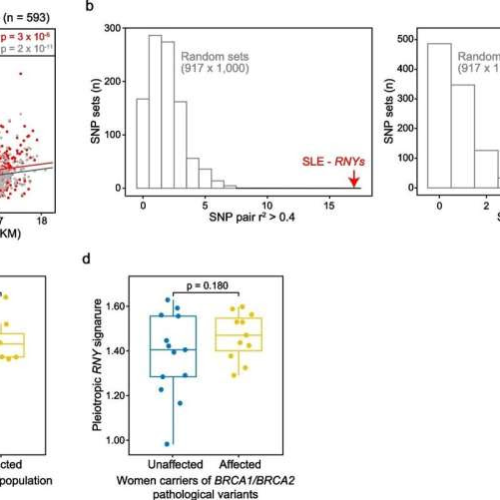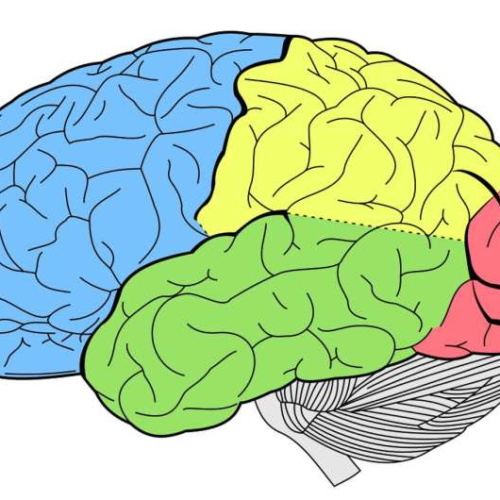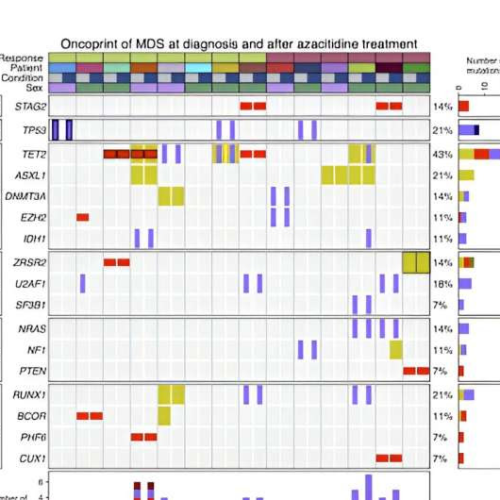by Germans Trias i Pujol Research Institute Pleiotropic RNYs are linked to SLE risk and plasma RNYs are relatively abundant preceding breast cancer diagnosis. a Scatter plot of the correlation of the levels of expression between RO60 and the pleiotropic or non-pleiotropic RNY signatures in TCGA normal tissue. The PCCs and p values are indicated....
Improving functional recovery of the brain and heart after traumatic brain injury
by Kathryn Ryan, Mary Ann Liebert, Inc Credit: CC0 Public DomainA new study in the Journal of Neurotrauma has shown that Angiotensin II type 2 receptor (AT2R) activation improves neurological and cardiac deficiencies caused by traumatic brain injury (TBI) in mice. AT2R activation is known to exert protective roles in the brain and heart. TBI of...
Repetitive high concentration capsaicin patch applications for nerve pain in a real-world setting
Peer-Reviewed Publication WILEY Capsaicin, derived from hot chili pepper plants, has been used to treat various types of pain, and a high concentration capsaicin patch (HCCP) is approved for the treatment of nerve (or neuropathic) pain. In a real-world study published in Pain Practice that included 97 outpatients in Germany diagnosed primarily with neuropathic back...
New findings shed light on the role of platelets in patients with cirrhosis
Study results could point to new possibilities for personalised therapeutic approaches Peer-Reviewed Publication MEDICAL UNIVERSITY OF VIENNA Next to other complications, cirrhosis is also linked to abnormalities in haemostasis. However, the role of alterations in platelet function had previously been insufficiently investigated. Now, researchers at the Medical University of Vienna have shed light on the...
RESEARCHERS GET CLOSER TO DIAGNOSING CTE IN LIVING PATIENTS
POSTED BY GINA DIGRAVIO-BOSTON A new discovery brings researchers one step closer to diagnosing chronic traumatic encephalopathy in living patients, rather than after death. Years of research have shown that athletes who play high-contact sports—like tackle football and soccer—and endure frequent hits to the head risk developing chronic traumatic encephalopathy (CTE), a neurodegenerative disease. It’s not...
TOO MUCH OR TOO LITTLE SLEEP TIED TO RISKY CHANGES IN THE BRAIN
Sleeping too much or too little is associated with changes in the brain that are known to precede and increase the risk of stroke and dementia later in life, a new study suggests. In one of the largest neuroimaging studies of its kind, researchers at Yale School of Medicine (YSM) examined the brain images of...
New cell therapy shows promise with acute respiratory distress syndrome patients
by Anglia Ruskin University Credit: Pixabay/CC0 Public DomainPromising trial results indicate that a new type of cell therapy could improve the prognosis of those who are critically ill with acute respiratory distress syndrome (ARDS) resulting from severe COVID-19. The findings are published in the journal Nature Communications. Professor Justin Stebbing of Anglia Ruskin University (ARU) is...
Healthy living builds ‘cognitive reserve’ in brain that may prevent dementia
by Ernie Mundell New research suggests healthy lifestyles can help stave off dementia, perhaps by building a resilient ‘cognitive reserve’ in the aging brain. The study was based on the brain autopsies on 586 people who lived to an average age of almost 91. Researchers compared each person’s lifestyle and end-of-life mental skills to their...
Improving quality of life and sleep in people with memory problems without using drugs
by University of Pennsylvania School of Nursing Credit: Pixabay/CC0 Public DomainA study from the University of Pennsylvania School of Nursing (Penn Nursing), recently published in Innovation in Aging, has shown promising results in improving the quality of life (QOL) and sleep quality in individuals living with memory problems. The research delves into the efficacy of a...
Team discovers how to predict whether patients with leukemia will be sensitive to epigenetic drugs
by Josep Carreras Leukaemia Research Institute Credit: Cancer Research Communications (2024). DOI: 10.1158/2767-9764.CRC-23-0389Alterations in the chemical modifications that control gene expression, known as epigenetics, have proven to be one of the most characteristic properties of all human tumors. This realization has generated the development of intense pharmacological research to find drugs that act at this level...






